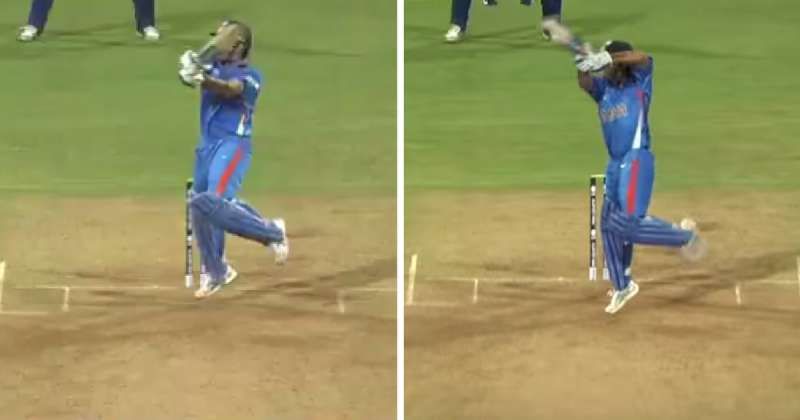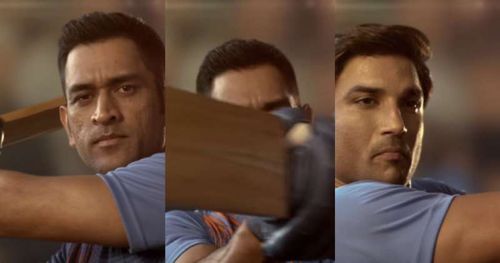
The untold story of Sushant Singh Rajput's transformation into MS Dhoni
A biopic based on the life of an active sportsperson is a rare occurrence in cinema. Yet, convention doesn’t fall under the gamut of Mahendra Singh Dhoni, whose inspiring journey has been a heady mixture of dispiriting lows and unmatched heights. Sushant Singh Rajput, with his dedicated portrayal of the lead character, absorbed himself into the role. The final result was for everyone to see and applaud.
For those who have seen the biopic (I have seen it twice in theatres), there was one aspect that was aimed at seamlessly transforming SSR into MSD’s character. Apart from the copious amounts of hard work done by the actor to imbibe the mannerisms of the Indian captain, he was helped along by something which is very important in filmmaking these days: visual effects.
Now, CGI (computer-generated imagery), although a late bloomer, has gained significant ground in Bollywood over the past decade. Ignored earlier due to constrained budgets and the general ignorance of the latest technical advancements, Indian cinema stayed in its limits even as Hollywood kept taking giant strides.
To analyse the visual effects used in MS Dhoni’s biopic, we take a cue from the techniques used in two Hollywood movies, released earlier this decade.
The Captain America technique
Even for the Marvel Comics buffs around, it won’t be difficult to concede that the first Captain America flick (The First Avenger) was a drab movie that stretched in parts, failing to excite many Steve Rogers fans.
However, for those who managed to get through the first half, one thing that stood out was Chris Evans’ portrayal of a skinny young lad wanting to join the forces. The bulked up hunk had suddenly morphed into a timid youngster who could barely go past even the first round of the screening process.
To show Chris Evans as a malnourished teenager, the director had two options. One was planting Evans’ face on a slim teen’s body. After careful deliberations, the idea was initially rejected, mainly because the director believed that Evans’ mannerisms were not being convincingly mimicked by the other actor.
Hence, they resorted to a more laborious strategy. Evans was shrunk, inch by inch, frame by frame for the entirety of his role as the wiry young boy. The makers used green-screen for every scene featuring the young Evans to facilitate the process of diminishing him in size, without having to tinker with the scenery behind him.
A similar technique was also used by Red Chillies VFX for the Shah Rukh Khan starrer, Fan.
Thus, for the initial third of the movie, Evans is down to being a ‘98-pound weakling’.
For instances where technology was not giving the required results, a body double was used to fill up the missing pieces. Each scene was done twice, once with Evans himself and subsequently replicated by the body double, who aped his movements as much as possible. Evans face was then planted on the double’s body.
The scenes involving the character’s movement employed the shrinking technique, whereas all instances where there was little or no motion, the head planting technique was used, using a process mentioned below.
The Winklevoss twins in The Social Network
The Winklevoss twin brothers, who, along with Divya Narendra, famously sued Mark Zuckerberg for stealing the idea of Facebook, had a major role to play in The Social Network.
The American actor Armie Hammer (yes, there’s only one of them!) was chosen to play the twins. Since Mr. Hammer doesn’t have an identical looking brother, the film-makers devised a strategy for using a double to play the other half, later planting the main actor’s face over the other’s body.
The actual scene is performed with both the main actor and the body double together. The facial light patterns on both the characters are then analysed and mapped.
The scene is enacted twice. Once with the double, to capture the body and subsequently by the main actor, to capture the face of both the roles. The VFX team takes care of the rest, seamlessly combining the two scenes.
There’s a computer-generated lighting rig that replicates the exact light and shadow being projected on the body double during the scene. The main actor’s face is then planted on the double’s body, using the artificial light generated by the rig.
A similar process was also used during the filming of the Brad Pitt-starrer, The Curious Case of Benjamin Button.
Sushant Singh Rajput’s transformation
In an attempt to maintain continuity in MS Dhoni: The Untold Story, Sushant Singh Rajput played Dhoni’s character right from his school days to the World Cup triumph in 2011. Considering the fact that Rajput is a well-built actor (as was also required for the older Dhoni’s character), playing a teenage Dhoni without a little tweaking wouldn’t have looked convincing.
To show the younger Dhoni learning his trade at school-level cricket, the makers decided to put Sushant’s face on a slim teen’s body (Captain America, idea 1.0).
Although it is an earnest attempt, parts of it looked forced, with inconsistent lighting hampering the finished product and highlighting an artificial looking face over a young cricketer’s body. From the images, you can see how light has been projected on Rajput’s face that looks to be planted on a slimmer person’s body.
For the latter part of the Dhoni movie, where Rajput is reprising the Indian captain’s role in the national side, the actor’s body was superimposed on the actual match footage. Right from his debut against Bangladesh, where he falls for a duck, to the World Cup six in 2011 where he ‘finishes off in style’, Rajput has enacted Dhoni’s trademark shots himself.
If you compare the shots played by the two, you can see that Rajput has managed to recreate them to a considerable extent. The movie-makers decided to go ahead with Rajput instead of using actual match highlights to maintain the continuity of the character.

Hence, the rest of the footage is left as it is (retouched a little bit to enhance the quality). Below, you can see Rajput’s rendition of the World Cup winning six.




